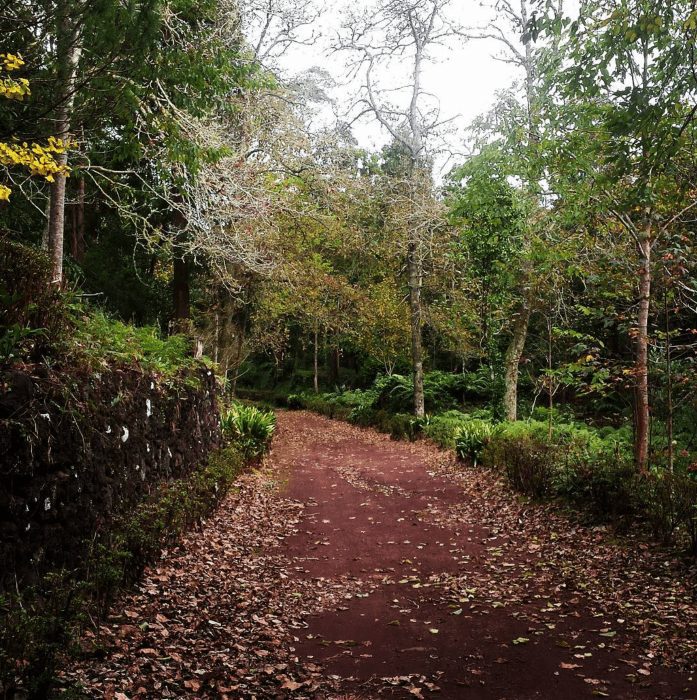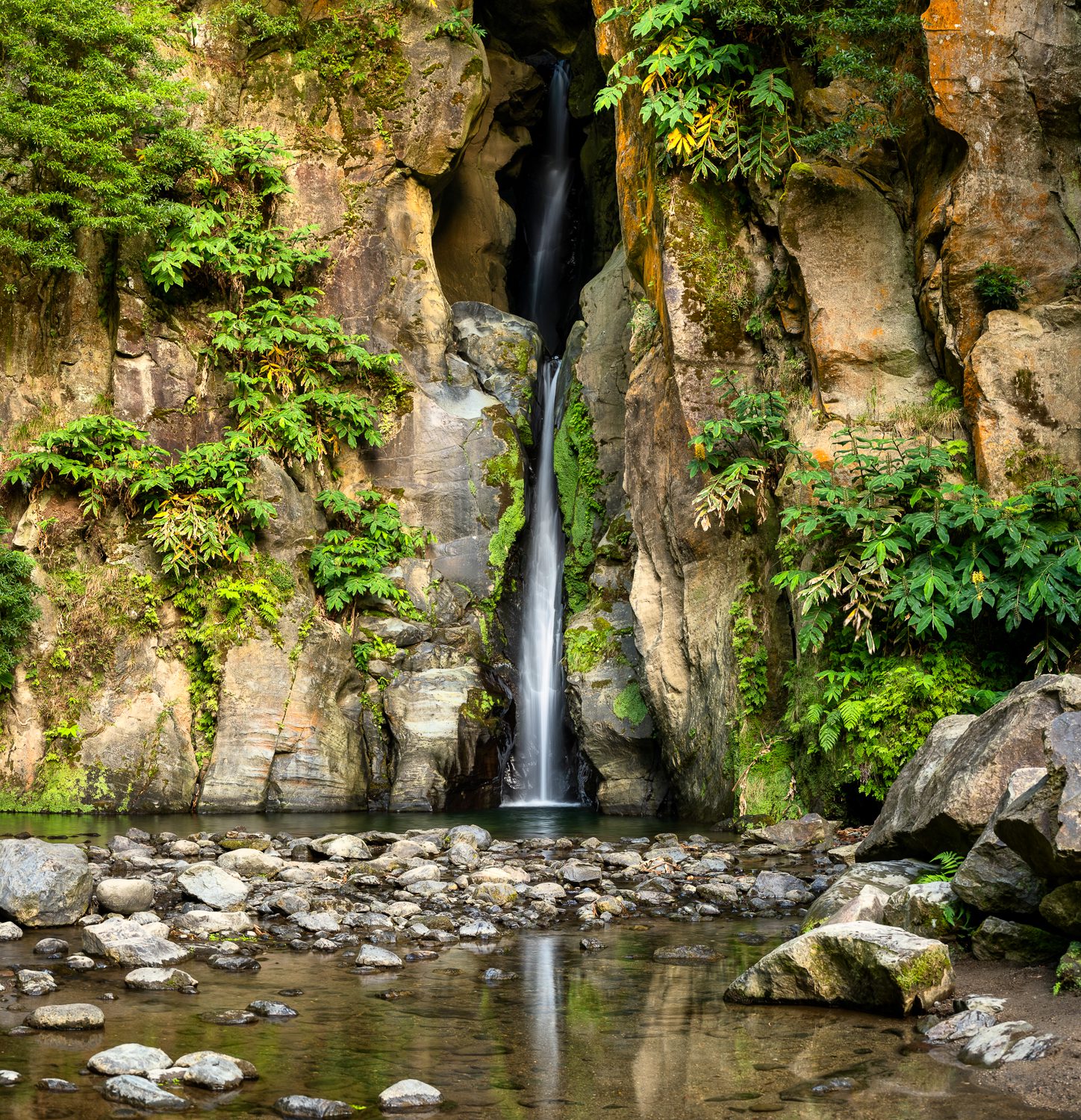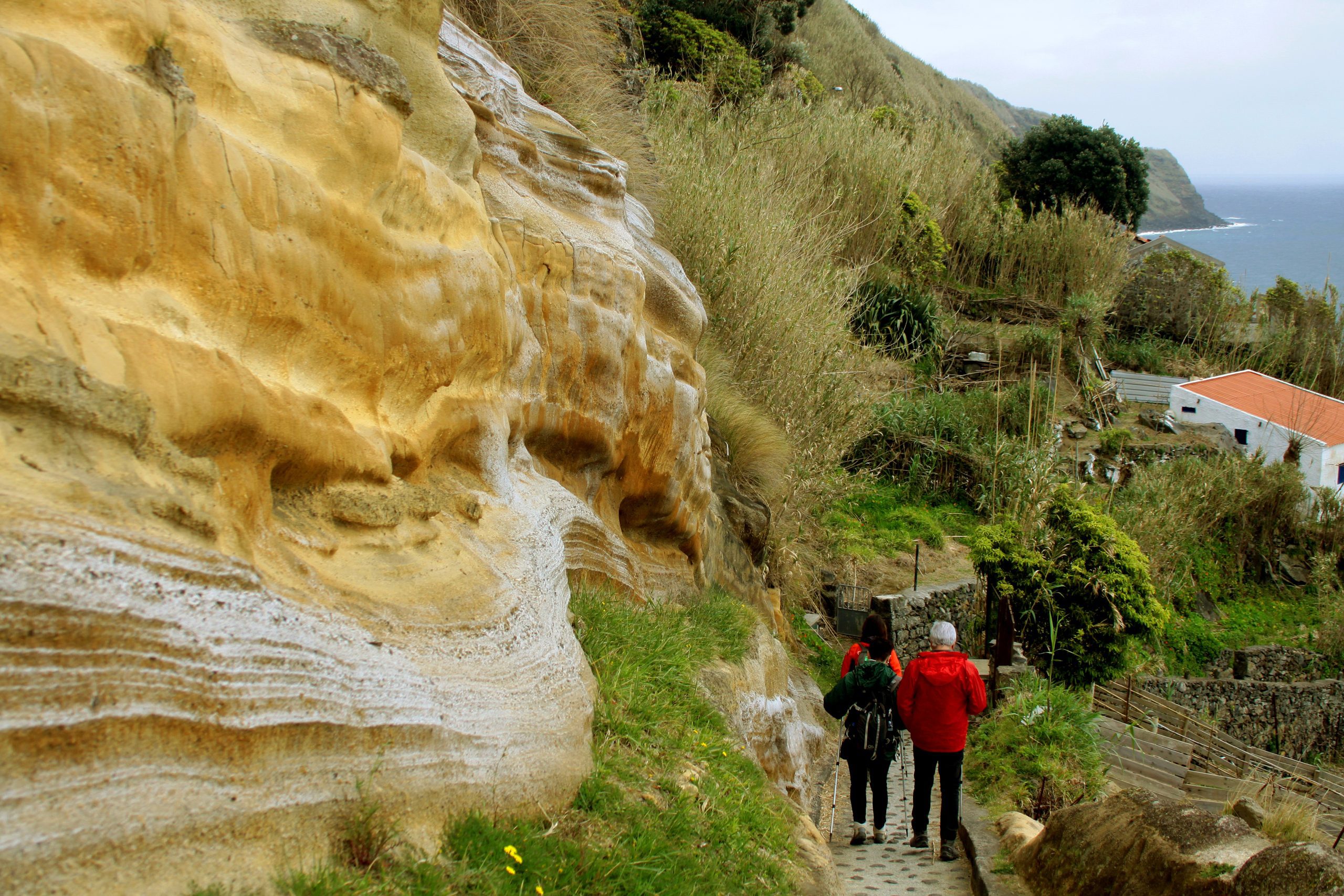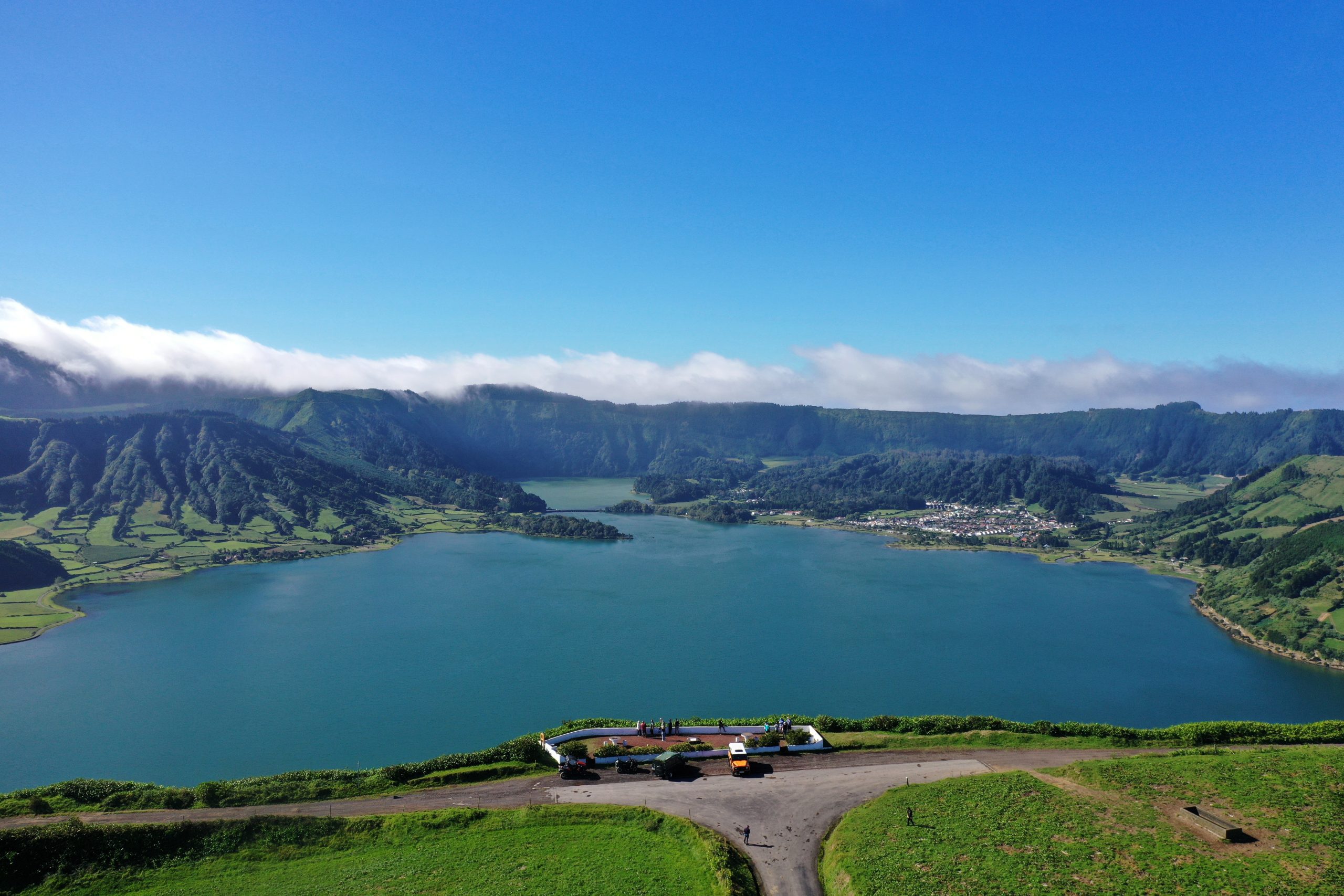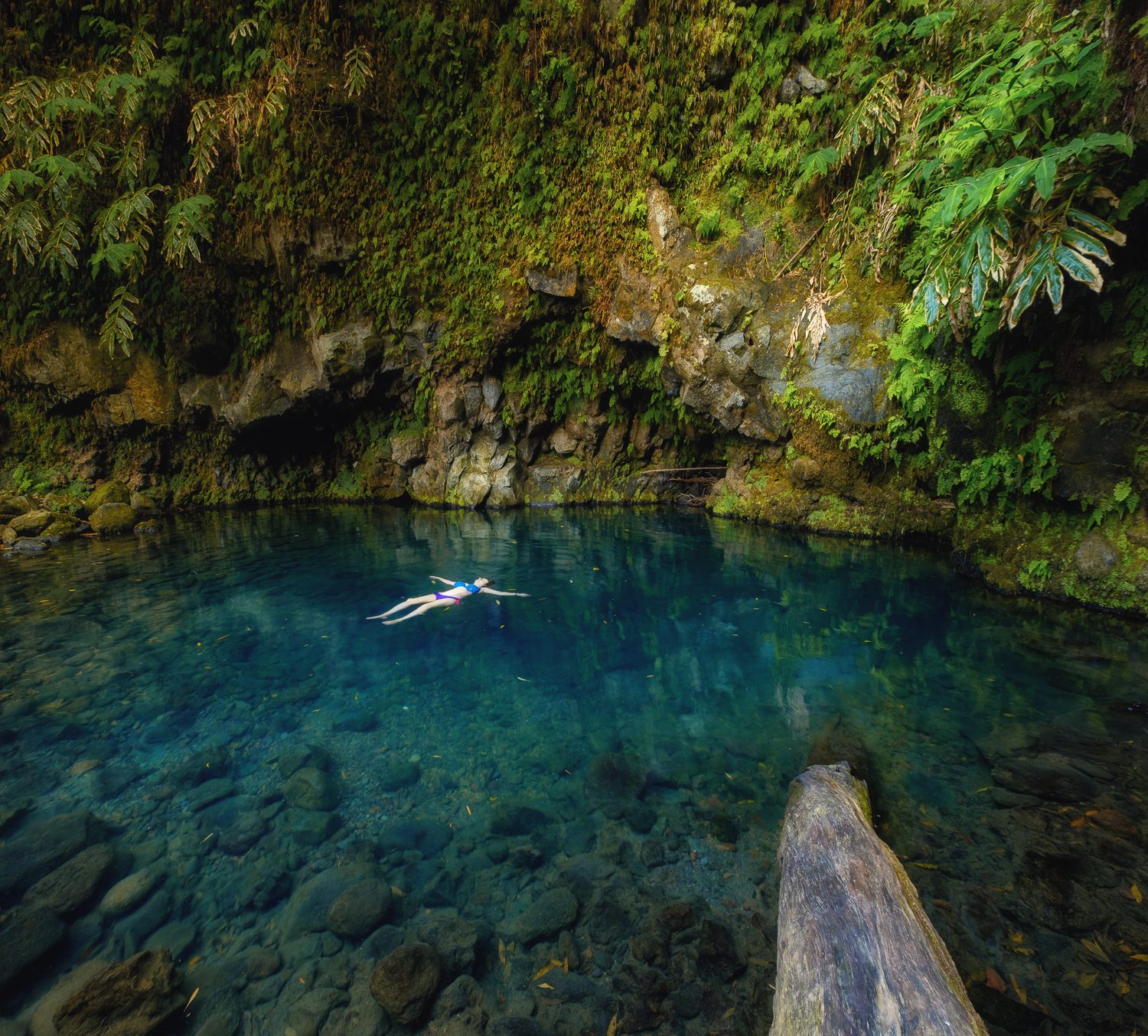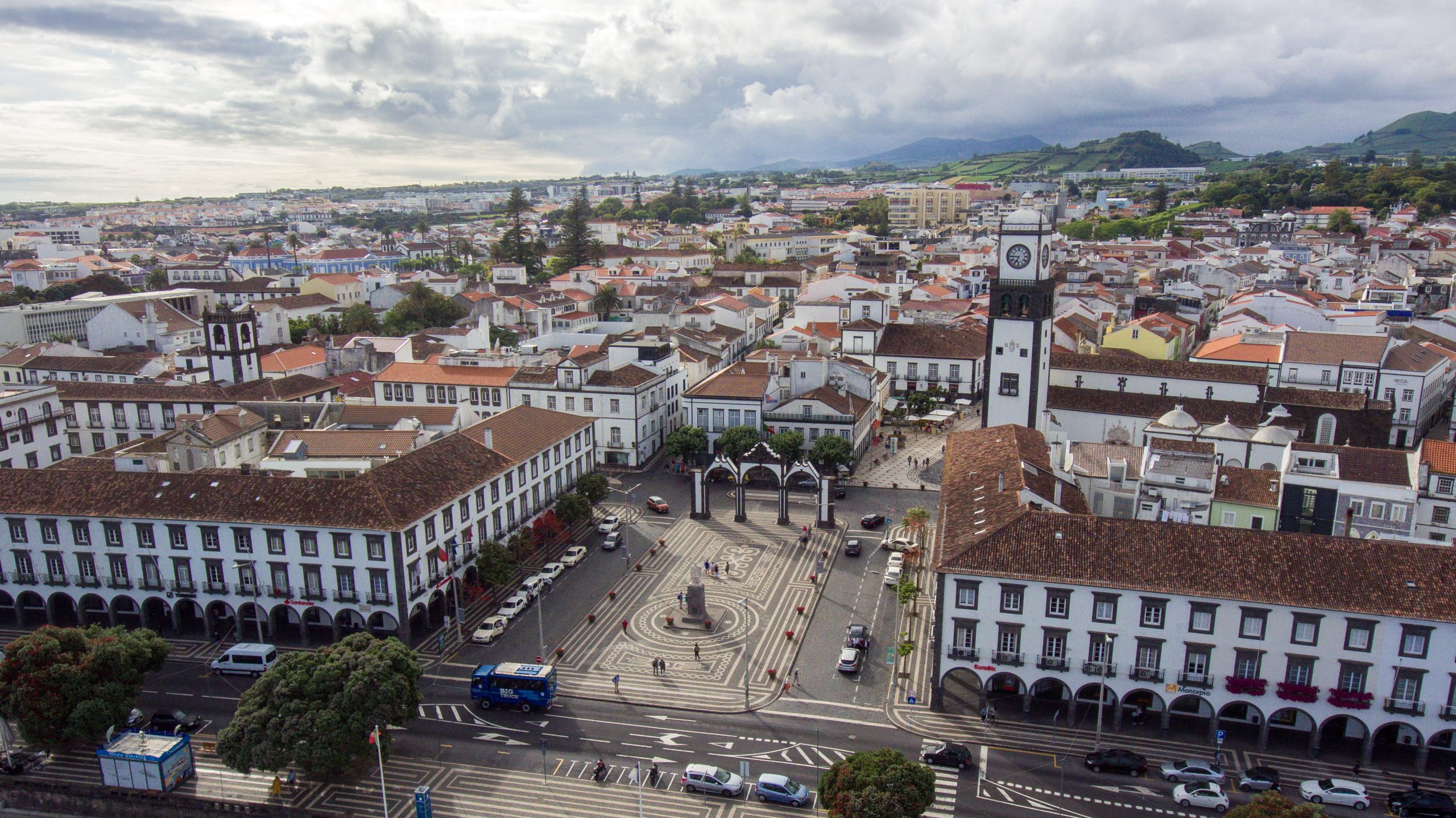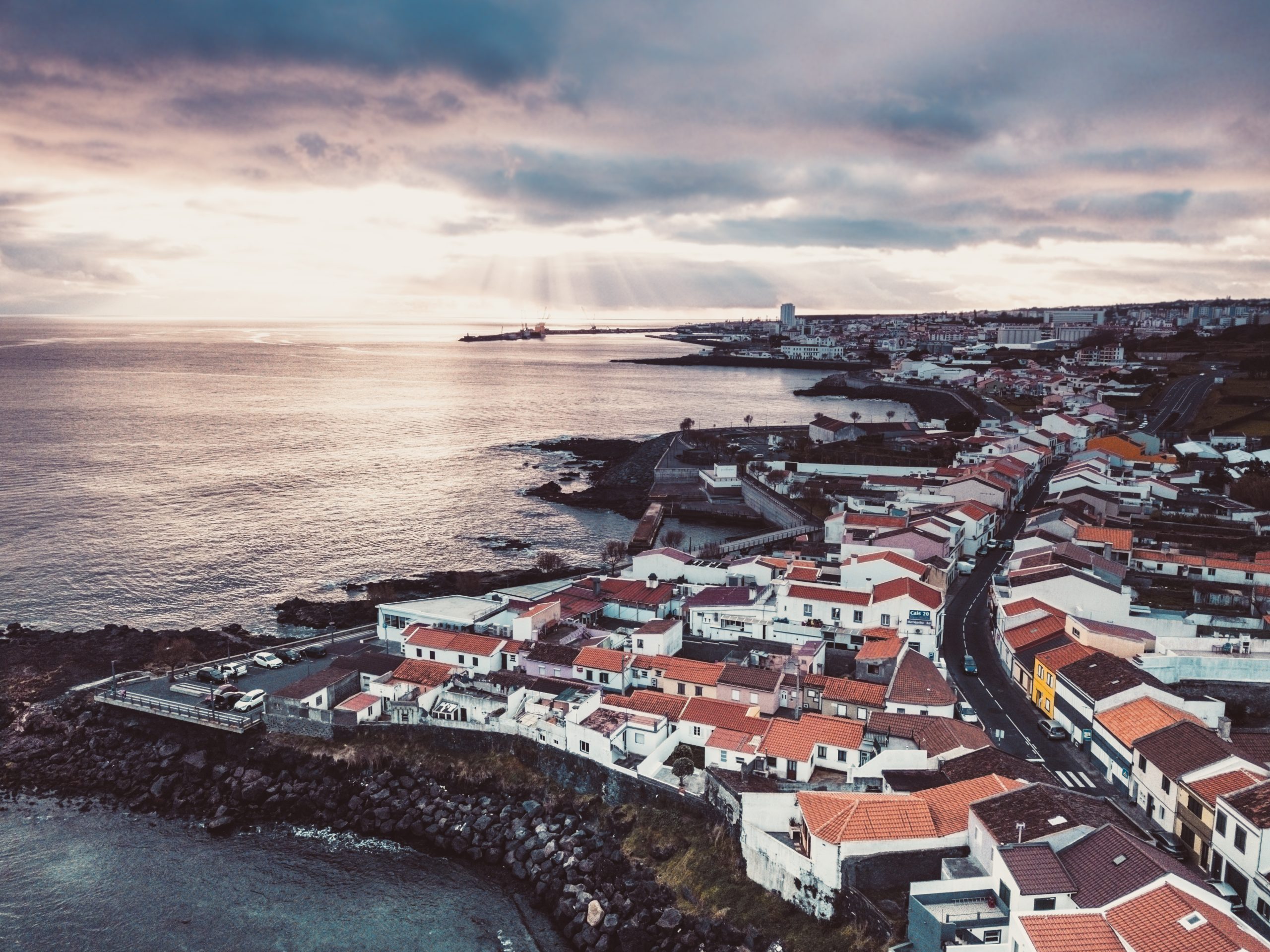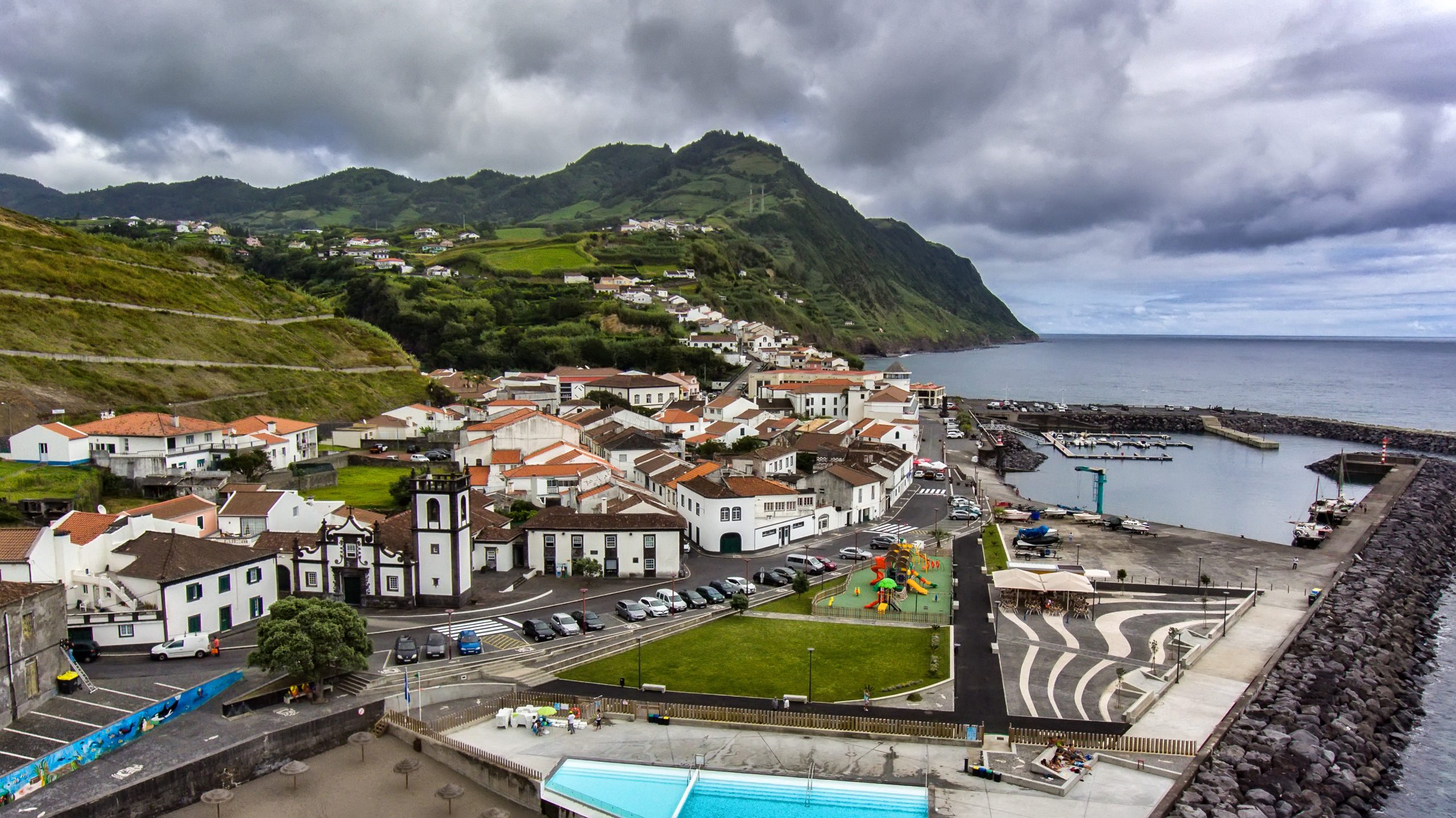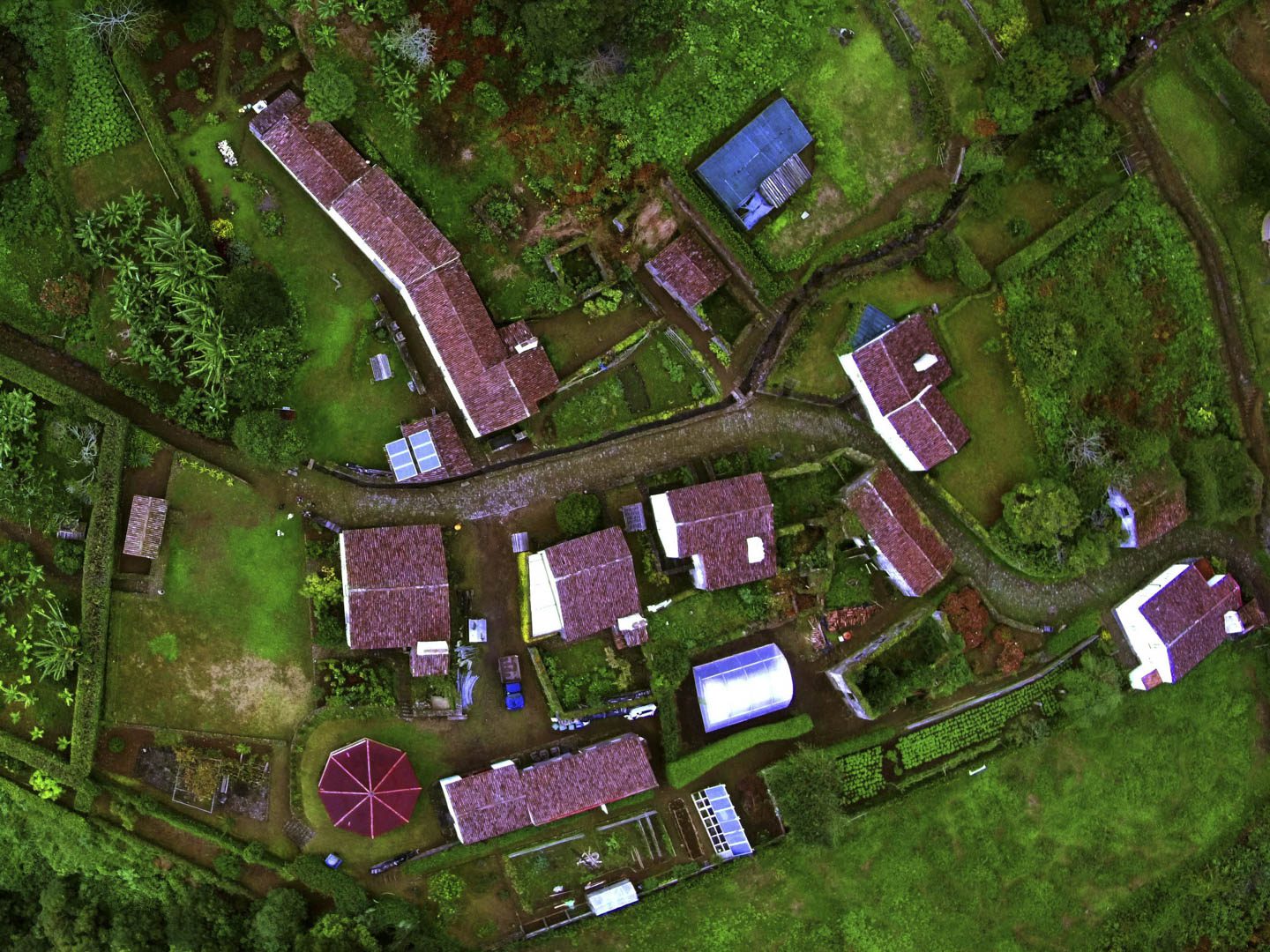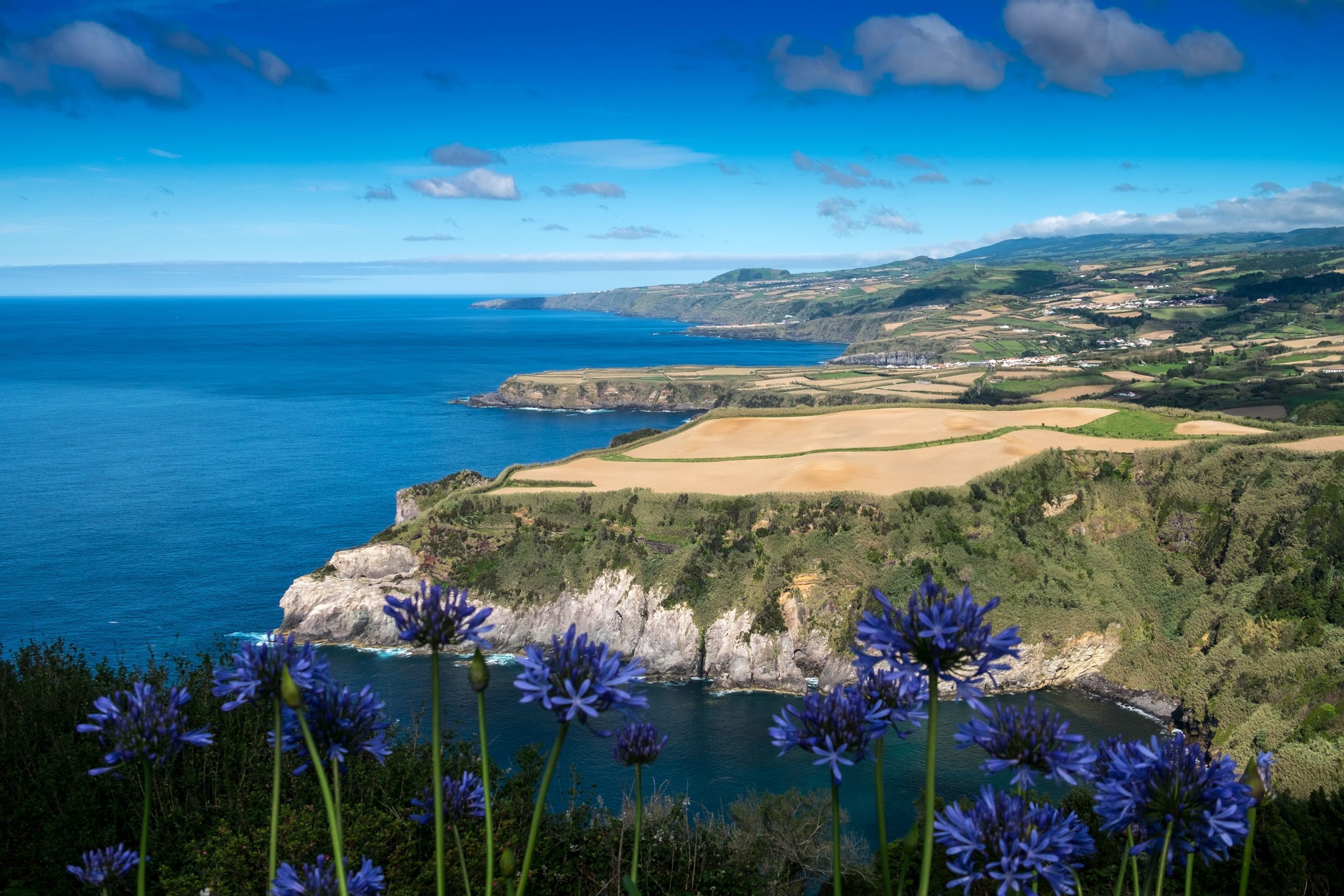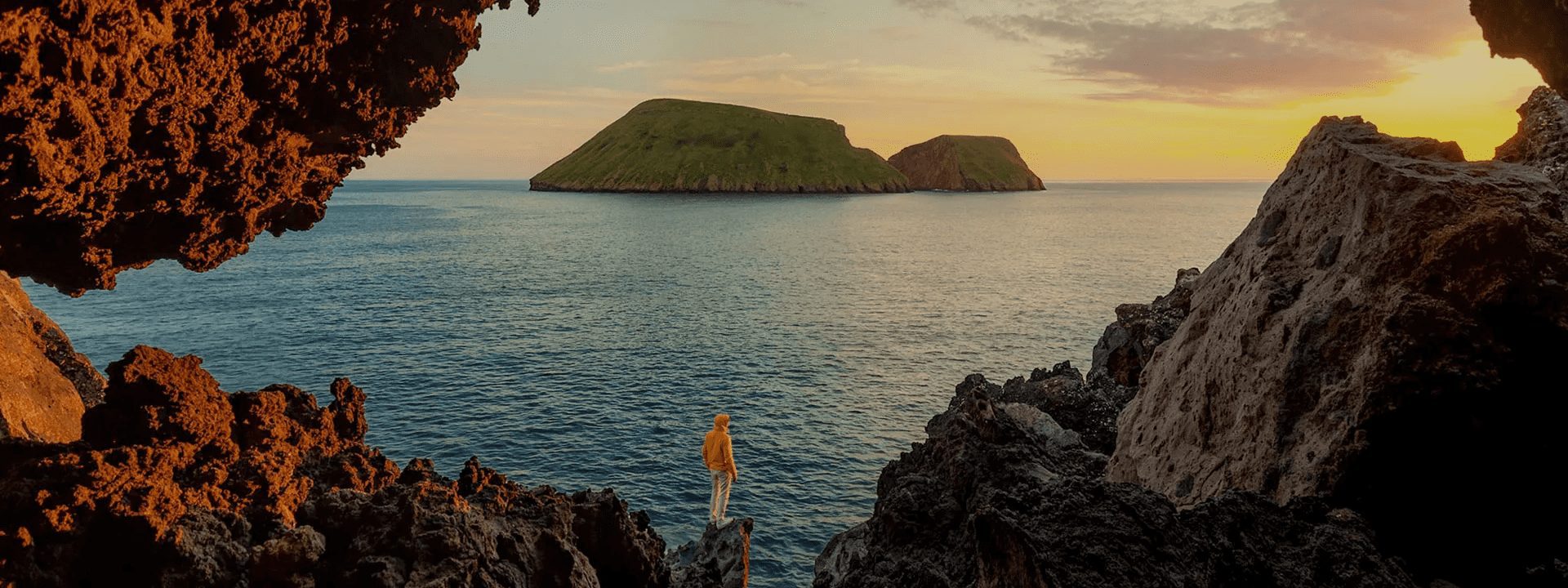The Pico Vermelho Windmill is located on the northern coast of São Miguel Island in the Azores Archipelago. It stands as a rare architectural landmark, with construction estimated between the 18th and 19th centuries.
Visitors to this historical and cultural symbol can admire the excellent state of preservation of the windmill and enjoy the beautiful landscapes from this natural viewpoint. If you can’t fit it into your daytime itinerary, visit at the end of the day for a fantastic sunset.
Where is Pico Vermelho Windmill

Pico Vermelho Windmill is located in the village of Ajuda da Bretanha, Ponta Delgada, São Miguel Island, Azores. It is one of the few remaining windmills of this type still preserved and in working condition on the island, making it an unmissable cultural and historical landmark.
Did you know
Within the same urban layout, next to Pico Vermelho Windmill, is the Chapel of Santo António, which dates back to 1954 and is also in exceptional condition.
Check all our articles about each one of the most relevant points of interest in Ponta Delgada: Gruta do Carvão | Ponta Delgada | Jardim António Borges | Jardim Botânico José do Canto | Pinhal da Paz | Portas da Cidade | Milícias & Pópulo Beaches | Praia de São Roque | Pico Vermelho Windmill | Rocha da Relva | Mercado da Graça | Miradouro Vigia da Baleia
History of Pico Vermelho Windmill

This windmill, built at Pico Vermelho in the 19th century, is a two-story Dutch-style windmill whose original use is closely linked to São Miguel’s milling tradition. Due to their significant role, the design of these windmills involved great ingenuity and wisdom, from the choice of construction method to the selection of their location. Builders constructed them in high, windy areas and used robust materials to withstand harsh weather conditions.
Pico Vermelho Windmill is one of the few examples of this type of construction, and its excellent state of preservation has made it a popular tourist attraction. Its white, cylindrical, and sturdy body contrasts with the other elements: the domed roof and vibrant red wind blades. This combination creates beautiful shadows that will indeed remain in the memory of visitors of all ages.
Quick Info
In 1996, Pico Vermelho Windmill was classified as a Property of Public Interest and, in 2008, reclassified as a Property of Municipal Interest.
Nearby Attractions
Visiting Pico Vermelho Windmill offers a pleasant break during your tour of the island. Its location, on the northern coast of the island, is close to Mosteiros and also just a short detour from Lagoa das Sete Cidades, one of São Miguel’s most popular tourist spots. If you’re traveling with family, it’s also an exceptional visit for children! Visiting the windmill will give them a chance to experience an iconic and distinct architectural feature.
Related Articles: Mosteiros | Lagoa das Sete Cidades
Authors’ Note
I am pleased to inform you that all the recommendations in this article are based on my personal experience and observations. As the author, I have personally visited each attraction mentioned, ensuring that every suggestion is grounded in first-hand knowledge and genuine enthusiasm.
Complementary Information
Best Season to Visit the Azores
The Azores Archipelago boasts a unique climate that shapes its lush landscapes, making it a splendid year-round destination. With mild temperatures and minimal fluctuations, each season offers something unique. Spring averages 16 °C, summer reaches 21 °C, autumn cools to 18 °C, and winter remains mild at 14 °C.
→ For a detailed breakdown of the weather by month, check the following links 🌤️☔️: January | February | March | April | May | June | July | August | September | October | November | December
How to Get to the Azores
The Azorean Archipelago is easily accessible through numerous flight routes. Lisbon and Porto are the main entry points to the continent, with direct flights available to São Miguel (PDL), Terceira (TER), Faial (HOR), Pico (PIX), and Santa Maria (SMA). To find the best flight, use search engines like eDreams or Skyscanner. These platforms let you compare prices and schedules from multiple airlines in one convenient location.
For more details on how to get to the Azores, take a look at our complete guide. But what if you want to explore beyond your arrival island? We’ve got you covered!
- Azores airports 🛬
- Flights between islands ✈️
- Ferries between islands ⛴️
- Which island to choose? 🏝️
- What airlines fly to the Azores? 🛩️
→ Once you’ve found the perfect route, book your tickets and get ready to experience one of the world’s most stunning island groups!
Travel Essentials
Essential Information for your Azores trip: Azorean Language & Phrases 🗣️ | Currency & Banks 💵 | Credit Cards & Traveler’s Cheques 🏧 | Driving in the Azores 🚗 | Electricity 🔌 | Experiences & Tours 🗺️ | Health & Safety 🩺 | Internet & Wi-Fi Access 🛜 | Phones & Mobile Service 📞 | Post Offices & Buying Stamps ✉️ | Public Holidays 🏖️ | Shopping 🛒 | Time & Daylight 🕒 | Whale Watching Guide 🐳 | Best Island to Visit 🏞️
Useful Tools & Apps
The weather in the Azores can be variable, so it’s helpful to use some apps before visiting the islands. Spotazores provides live camera feeds from the main tourist attractions, allowing you to check the weather and plan your visit. For accurate weather predictions, use Windy or Windguru — they provide the most reliable predictions.
FAQs
They built the windmill in the Dutch style between the 18th and 19th centuries and used it for traditional milling in São Miguel. In 1996, it was classified as a Property of Public Interest.
Yes, the windmill is a popular tourist attraction that is open to the public. However, visitors cannot access its interior.
The Dutch-style windmill features a cylindrical white body with a domed roof and red blades, creating a striking and memorable visual contrast.
Near the windmill, you’ll find the Chapel of Santo António, a historic landmark from 1954, as well as stunning views and easy access to Mosteiros and Lagoa das Sete Cidades.
Gallery








